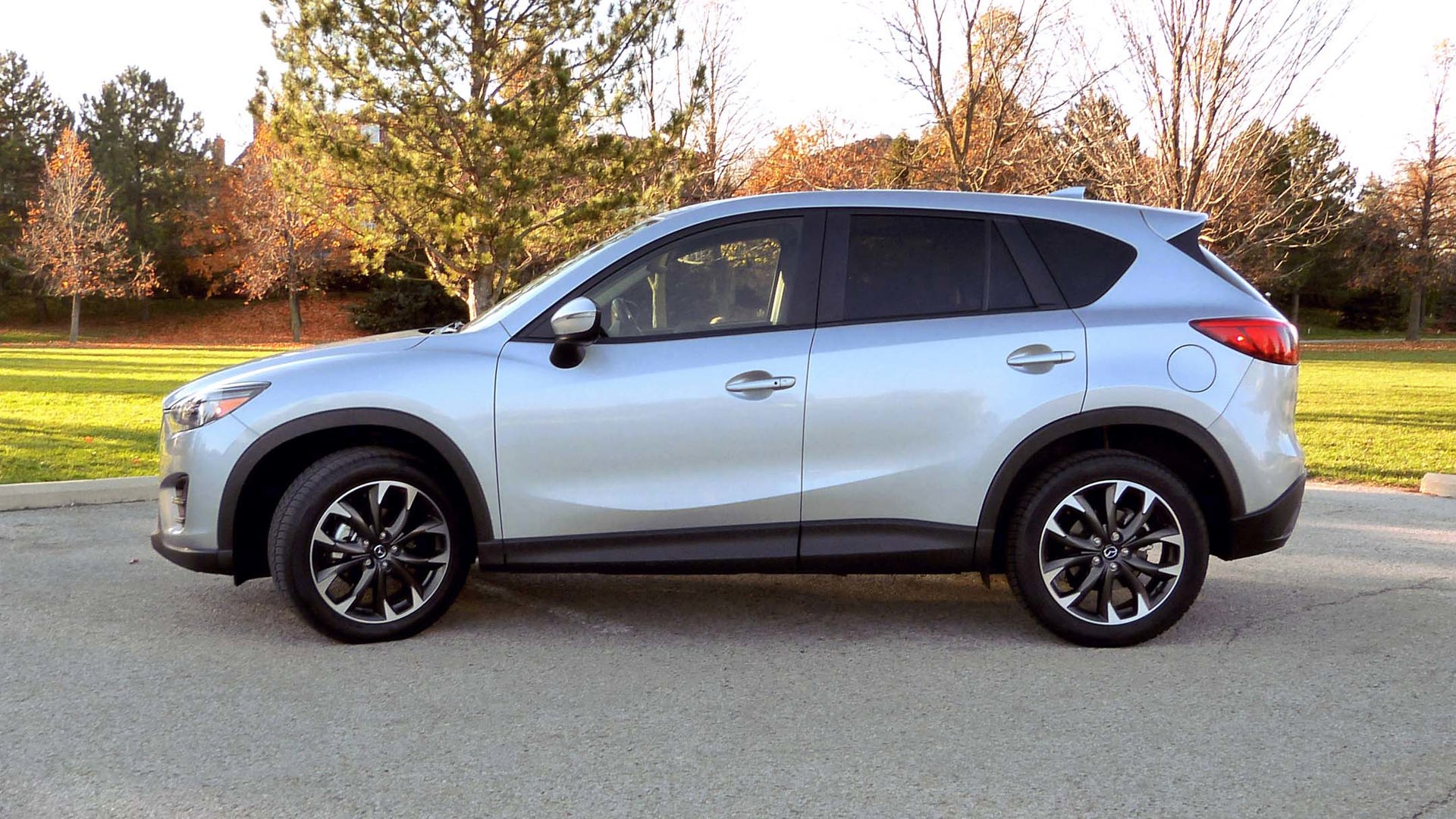Recently, I reported that my mother and her husband were in search of a new (to them) crossover to replace their beloved Hyundai Elantra. They asked me what the best crossover was, and in this story I explained that there’s no such thing – and instead listed numerous pros and cons of some popular models to help them (and you) make that determination on your own.
Today, it’s time for the next chapter in mom and hubby’s crossover shopping saga. This time around, mom was in touch to ask 600-or-so questions about some of the for-sale adverts she’d been browsing on her iPad.
Mom sent me a text.
“Hi Justin. We are looking at ads. Is FWD the same as Four Wheel Drive? That’s what we want. But is that better than All Wheel Drive? Also, what’s a CVT? And we’re not sure what EX-L, GDI, SV or Platinum mean, either. Oh, and Tim [her husband] says he really likes this Nissan Rogue, but he’s worried because it says the transmission has ‘0’ gears. And what’s BSM? Is that something to do with the tailgate?”
Used car ads can be frustrating because they don’t all convey the same information the same way. Some are too technical for non-savvy shoppers; and if you don’t know what you’re looking at, it can be a nightmare to sift through the abbreviations and terminologies and features.
Further, if someone filled out the ad incorrectly, things can get even more confusing.
So, for mom, her husband, and anyone else in a similar boat, here’s a glossary to help sort your way through used crossover ads, and to help understand some of the common terminologies you’ll come across.
Body Type (SUV, CUV, Crossover, Truck)
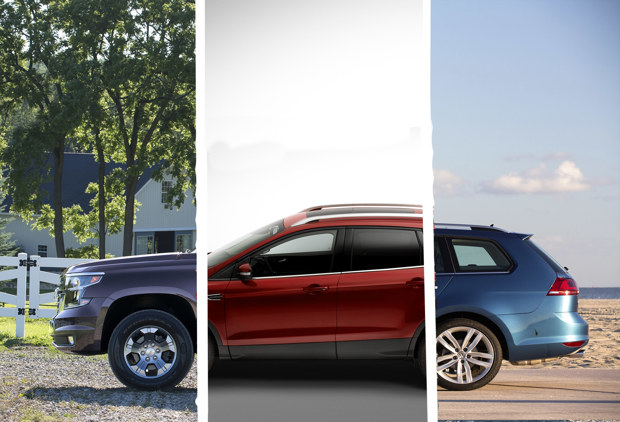
Is a Crossover the same as a Sport Utility Vehicle (SUV)? What about a Crossover Utility Vehicle (CUV)? The answer is, “sort of”. Look at the photos in the ad for a better assessment of the vehicle’s body type if you find the terminology confusing. Some crossovers – for example, the Honda CR-V, Toyota RAV4, and Ford Escape – may have body styles listed as “Crossover”, “SUV”, “CUV”, or even “truck”, depending on the ad. These terms are loosely interchangeable, and the photographs in the ad will give you a better assessment of what’s going on.
Trim / Trim Grade
This represents the vehicle’s trim grade, or how “basic” or “loaded” it is. Usually, crossovers are offered in two or more trim grades, with more equipment, gear, and luxury added as you go up the line.
Every carmaker has a different way of identifying their trim grades. Nissan often uses S, SV and SL for basic, mid-line and loaded. Ford might use XLT, Sport and Platinum. Hyundai might use SE, Sport, Ultimate, Luxury, and Premium.
Your best bet to understanding the trim grade naming scheme of the crossover your considering involves looking into our Vehicle Research Pages, which detail all the available trims for any given year/make/model.
Four-Wheel Drive (4WD or 4x4) / All-Wheel Drive (AWD)
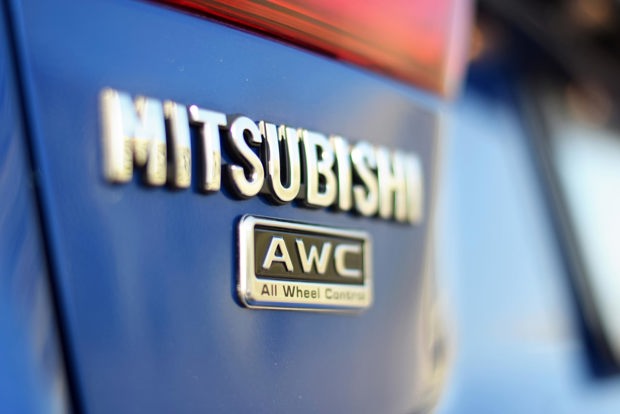
If you want a crossover with four-wheel or all-wheel drive, bear the following things in mind. First, in the vast majority of used crossover ads, these two terms are used interchangeably. Both essentially mean the same thing: that the vehicle has four-wheel traction. (An aside: 4x4 and AWD are subtly different, but for this purpose, mean the same thing)
Also, note that FWD means front-wheel drive, not four-wheel drive. Many crossovers are available in a lower-cost front-wheel-drive format, as well as in higher grades with all-wheel drive (AWD) or four-wheel drive (4WD). Translation? If you want a crossover with all four wheels driven, make sure the ad says AWD, 4x4, or 4WD and not FWD. Remember: just because it’s a crossover, doesn’t mean it has AWD/4WD.
Confusingly, some ads for identical vehicles may show different abbreviations. For instance, one ad for a Honda CR-V mom was looking at said the vehicle had AWD, and another ad for an identical model said it had 4x4.
Note that some automakers have their own names for all-wheel drive. For instance, Volkswagen calls their AWD system 4Motion, Acura calls theirs SH-AWD, Mitsubishi calls theirs S-AWC, BMW calls theirs xDrive, and Mercedes calls it 4Matic. These abbreviations, and others, all mean “AWD / 4WD”. If you’re looking at a Subaru, you’ll may see it called Symmetrical All-Wheel Drive, which is the same thing.
Automatic / CVT / DCT
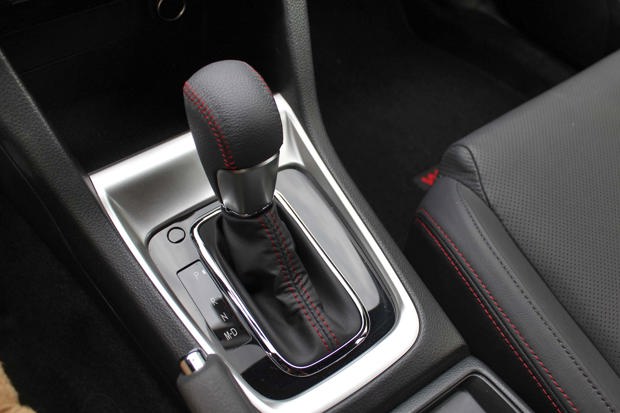
The vast majority of used crossovers have an automatic transmission. Automatic transmissions come in many shapes and sizes, and with different names and nomenclature. Some versions of the automatic transmission have unique names, too – including the continuously variable transmission (CVT), or the confusingly named dual-clutch transmission (DCT), which works like an automatic and has no clutch pedal for the driver to operate.
Some automatic transmissions have unique names, like the Lineartronic CVT (used by Subaru), the XTronic CVT (used by Nissan), and the PDK (used by Porsche, falling under the category of DCT).
Transmissions have a number of gears. That number ranges from 0 (technically, a CVT automatic transmission has no gears, though it works like a regular automatic), up to about 9 or 10. Most crossovers have somewhere between 5 and 8 gears. If the ad you’re looking at specifies “0” as the number of gears, it might have a CVT transmission (which is an automatic), or the person filling out the ad may not know how many gears that particular model’s transmission has, and just left it blank. Don’t get too hung up on how many gears the transmission has, as it’s not super-important.
Hybrid
A hybrid is a vehicle that uses both gasoline and self-generated electric power to drive the vehicle, for significant fuel savings. The Toyota Prius is the most popular hybrid on the road, but it isn’t a crossover. Many used crossover models are available with hybrid engines, including the Subaru Crosstrek, Nissan Pathfinder, Toyota RAV4, and others. If you’re set on a hybrid crossover, shop patiently: selection is fairly sparse compared to regular crossover models, due to generally low hybrid sales volumes.
Engine (4-Cyl, I4, V6, V8…)
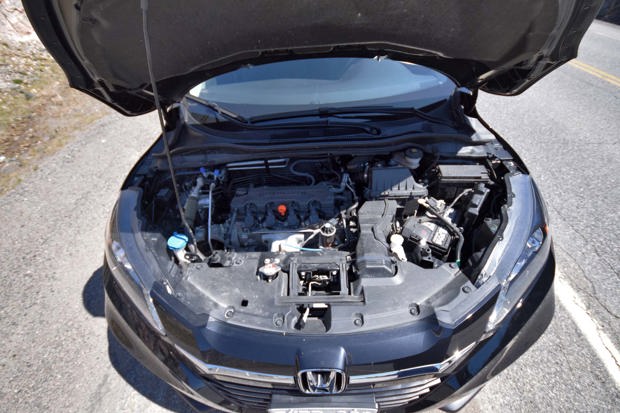
Engines come in many shapes and sizes, typically defined by the number of cylinders inside of them. Cylinders are where engines make their power, and more cylinders often means more power, but also, typically, heavier fuel use. You’ll see terms like “4-cyl”, which is just short for “four-cylinder”; or “I4” and “V6”, which also include the configuration of these cylinders: “I” for inline, where the cylinders are all in a row; and “V” for pairs of cylinders arranged in a “V” shape (fun to know, but makes no difference in everyday driving).
A crossover with a four-cylinder engine is adequate for most drivers concerned more with fuel economy than maximum performance. In a larger crossover, a V6 engine is the norm, for fuel economy balanced against good performance. Larger crossovers, specialized performance crossover models, or truck-based utility vehicles designed for heavier towing use, may have an eight-cylinder engine. This has plenty of power but will generally use more fuel than an engine with four or six cylinders.
L/100 km
The ad you’re browsing might list some figures expressed as a number, followed by the term “L/100 km”. This is a comparative fuel economy rating which represents the approximate amount of fuel, in litres, the vehicle will use for every 100 kilometres of driving.
For instance, a crossover with a rating of 9.0 L/100km will use about 9 litres of gas for every 100 clicks of driving. A crossover with a rating of 11.0 L/100km will use 11 litres of gas in the same 100 clicks of driving. The higher the number of L/100km, the more fuel that vehicle uses.
Note that these figures are often reported for both city and highway driving (cty/hwy), as vehicles tend to use more fuel when driving around town then while cruising. Some ads will also list a combined (cmb/comb) figure, which represents an approximate blended rate of fuel use that covers both types of driving.
Remember that these figures are standardized approximations, intended to be used in comparing the fuel economy of one vehicle to another – your real-life fuel economy will likely vary.
BSM / LDW
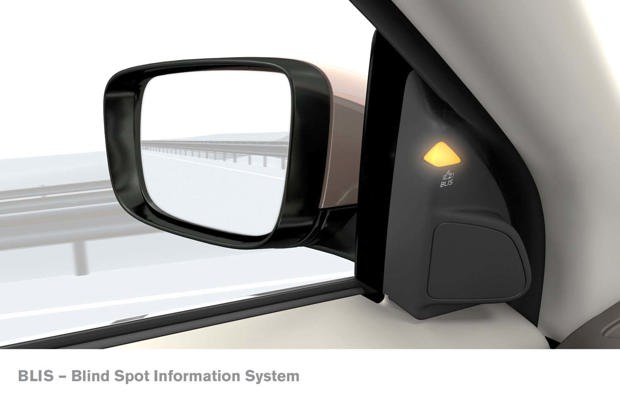
These two abbreviations reference two increasingly popular safety features, namely, blind spot monitoring (BSM), and lane-departure warning (LDW). The names may vary slightly, but the systems work the same way: by alerting you if there’s a vehicle potentially hidden in your blind spot as you drive; and by alerting you if you’re accidentally leaving your marked lane without a turn signal, respectively. Both systems intend to work with your safe driving to help prevent accidents.
ACC
This abbreviation means “adaptive cruise control”. In vehicles with ACC, a forward-facing radar or camera system monitors your closing rate on traffic up the way, and trigger automatic adjustments to your vehicle’s speed to maintain a safe position relative to changing traffic conditions, without you touching the pedals.
Bluetooth
If the vehicle you’re considering has Bluetooth, then it’s able to link wirelessly with your compatible smartphone for handsfree calling while you drive. Many vehicles with Bluetooth also allow for wireless music streaming between your smartphone’s media collection and the vehicle’s stereo system, without the need to physically plug your handset into the stereo – this is usually labelled “Bluetooth audio”.
Alloys
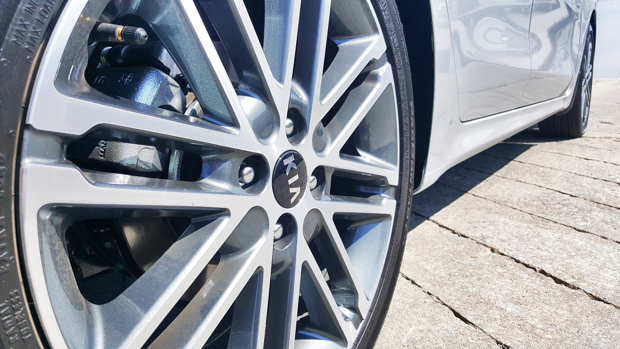
This refers to alloy or “mag” wheels. Instead of a steel hubcap with a plastic cover, a used crossover with alloys has a styled, premium wheel instead.
PW / PD / Power Group
These terms refer, respectively, to power windows, power doors, and the two together (and may also include something like power seats). You may also see these written with a slash, e.g. “p/w”. Note: “PS” can stand for “power seats”, but also “power steering”.
CPO
This is an abbreviation for Certified Pre-Owned. A CPO vehicle is typically sold by a branded dealer, and the CPO designation typically means the vehicle has met a higher standard of quality before being offered for sale. For instance, a Ford Escape sold as part of a Ford dealer’s CPO program has likely undergone a rigorous inspection, some reconditioning, and must meet a higher quality standard than a vehicle sold privately. A CPO-certified vehicle may cost more, but many shoppers appreciate the added peace of mind. If it’s in your budget, buying a vehicle from a CPO program through a branded dealer is typically a good idea.
Certified / Safetied
A vehicle that’s sold certified or “safetied” has had a professional inspection to assess its overall adherence to minimum government safety standards, possibly after some repairs or attention to various parts or components. If a vehicle is certified, you won’t have to obtain (and pay for) a safety inspection (or any required repairs). Note that a certification or safety is not a warranty, or guarantee of overall vehicle condition – it simply means the vehicle has met a minimum standard of safety.
